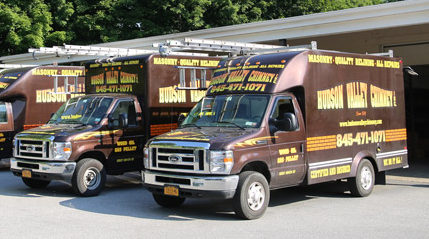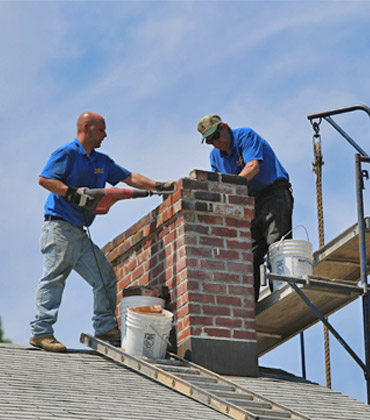Cracks in a New Chimney: What Should I Do?
 Chimneys can be remarkably durable, lasting a century or more. So why do people search for an answer to the question, “Why is there a crack in my new chimney?” It’s smart to determine the cause because a chimney needs to be in good working order, both for safe use of your fireplace and to avoid the danger of a possible collapse.
Chimneys can be remarkably durable, lasting a century or more. So why do people search for an answer to the question, “Why is there a crack in my new chimney?” It’s smart to determine the cause because a chimney needs to be in good working order, both for safe use of your fireplace and to avoid the danger of a possible collapse.
Causes of a Cracked Chimney
Some cracks in the chimney may be minor issues. For example, if a hairline crack appears in a few places in bed mortar, it could be caused by normal shrinkage. Repairing damaged mortar is an easy fix.
If a crack is continuous through brick or block masonry, investigation into the cause is important. These are strong materials with compressive strengths as high as 7,000 pounds per square inch (psi). If subjected to tension, however, they can easily crack. Tension is a force that bends or stretches, and it can be caused by wind pressure.
A common cause of chimney failure is settlement. This can occur if the soil that the chimney rests on is not strong enough to support the massive load placed on it. An average chimney can weigh tens of thousands of pounds, between the blocks or bricks and the mortar. When a chimney is built correctly, there is also the added weight of solid masonry around the flue liner.
Construction Issues that can Result in Cracked Chimneys
 Proper construction of a chimney is crucial. If any of the steps are missed or performed improperly, the result can be a failed chimney. The following are examples of problems that occur during construction:
Proper construction of a chimney is crucial. If any of the steps are missed or performed improperly, the result can be a failed chimney. The following are examples of problems that occur during construction:
• The blocks or bricks used to build the chimney could be defective, though there is a low probability of this happening. Poor quality mortar combined with defective bricks could result in cracks, however.
• There are certain specifications for building a concrete footer for a chimney. If this part of the building process is done inadequately, the result could be a crack in your new chimney. In general, footers should be at least a foot thick and extend 12 inches on every side of the chimney footprint. There should be 5/8-inch steel bars placed several inches from the bottom of the footer plus numerous other bars. The bars should not fall or droop during the process of pouring cement.
Negative Effects of Wind on a Chimney
It is not unusual for cracks in a chimney to be related to wind. Mortar doesn’t initially have the strength that it will after weeks and sometimes months. If a new chimney is subjected to strong winds, the tension could result in cracks. Steel rods installed inside the chimney can prevent the possibility of wind causing damage to a new chimney.
Is a Damaged Chimney Dangerous?
 If a chimney becomes weakened by a defect during the building process or even by natural deterioration, it can be very dangerous. Chimneys can literally collapse with little to no warning, causing injury and even death.
If a chimney becomes weakened by a defect during the building process or even by natural deterioration, it can be very dangerous. Chimneys can literally collapse with little to no warning, causing injury and even death.
If you have any questions about the soundness of your chimney or if you have a crack in your new chimney, contact our professionals for a chimney inspection. All of our technicians are trained, licensed, and able to provide an accurate assessment of your chimney and any repairs that may be needed. One of our many services is providing expert chimney rebuilds.








